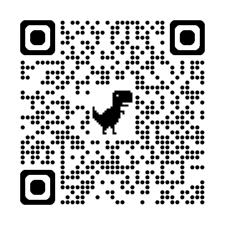
4 minute read
Predicting Dengue Risk in Africa
text: Tulio de Oliveira figure: Jenicca Poongavanan
Dengue is a mosquito-borne viral disease with expanding global impact. Accurately mapping dengue risk is essential for identifying areas of high transmission and targeting interventions effectively. Most current approaches to mapping dengue risk focus on environmental suitability for the virus or its mosquito vector, rather than estimating actual disease burden. In this study, we used an incidence-based approach; disaggregation regression, to estimate dengue cases at high spatial resolution using national and regional case data from Latin America. We then applied the model to Africa, where surveillance data are limited, and compared its predictions to three other common types of dengue risk maps.
Our results showed that while all approaches provided some insight into geographic risk patterns, they often highlighted different areas as priorities. Our incidencebased model captured both where dengue might occur and how intense transmission may be, helping bridge the gap between environmental and ecological suitability of transmission and real-world disease burden. This approach can support more informed decision-making in areas with limited surveillance and guide targeted control efforts.
Results from the prediction models
To estimate fine-scale dengue burden from aggregated case data, we applied a disaggregation regression model trained on subnational case reports from 14 countries in Central and South America, using data from 2018 and 2019 to maximise spatial coverage and resolution. The model uses environmental and demographic covariates to downscale aggregated case counts to ∼10 km2 resolution. Model performance was evaluated using 5-fold spatial block cross-validation, wherein the study area was divided into five spatial blocks of approximately equal size. We selected five spatial blocks to balance spatial representativeness with computational feasibility, as increasing the number of folds would have substantially raised the computational burden given the scale and resolution of the dataset.
The model was iteratively trained on four blocks and tested on the fifth to assess predictive accuracy within the training region. The reported correlation reflects the agreement between observed and modelpredicted dengue incidence at the administrative level, calculated by aggregating pixel-level model predictions and comparing them to reported surveillance data. We used Spearman’s correlation.
Overlap Between Model-Predicted Incidence and Other Dengue Risk Indicators in Africa
To assess how our model qualitatively compares with existing risk frameworks, we compared the spatial estimate output from our disaggregation model: predicted incidence (Figure 3A) and three widely used dengue risk indicators: (i) the dengue Suitability Index (Figure 3C), (ii) the transmission potential (Index P) (Figure 3D), and (iii) the vector suitability index for Aedes aegypti (Figure 3B). Assessing agreement and divergence among them provides insight into where models converge to flag consistently high-risk areas, and where uncertainties remain.
To enable direct spatial comparison and identify areas of high-risk concordance, we applied model-specific thresholds to each risk surface: >0.5 for both the Aedes vector suitability and dengue environmental suitability indices, >0.5 for the transmission potential (Index P), and >1 predicted case (per 100k inhabitants per pixel) for the disaggregation-derived incidence map (Figure 4-Inset). We then created binary high-risk maps and overlaid them to count how many models flagged each pixel as high-risk (Figure 4 - above).
Figure 4 Legend (Above)
Agreement among dengue risk models across Africa. Map showing the number of dengue risk indicators: predicted incidence, transmission potential, dengue suitability index and vector suitability index, that classify each pixel as high risk. High-risk classification was determined using model-specific thresholds: >0.5 for suitability indices and transmission potential; >1 of predicted incidence per 100k people (per pixel). Darker red areas indicate strong agreement among all models in predicting high dengue suitability, whereas lighter green areas reflect lower concordance. Grey regions represent areas where all four models predicted low risk based on the respective threshold.
The comparison between all four dengue risk maps reveal high concordance across much of the coastline of West Africa, in countries such as Nigeria, Benin, Togo, Ghana and Ivory Coast. We also observe notable overlap across parts of the southern Sahel (including Burkina Faso, southern Mali, and southwestern Niger, northern part of Nigeria). In these regions, the predicted incidence from the disaggregation model aligns spatially (Figure 4-Inset) with both high transmission potential and vector suitability, suggesting that environmental and epidemiological conditions are simultaneously favorable for dengue transmission. Mauritius also seems to be at the intersection of high risk across at least three indicators.
Open Access Publication
Disaggregation Regression and Multi-Model Evaluation for Predicting Dengue Risk in Africa. Jenicca Poongavanan and Colleagues.bioRXiv, 2025. https://www.biorxiv.org/content/10.1101/2025.06.17.66 0069v1.full











